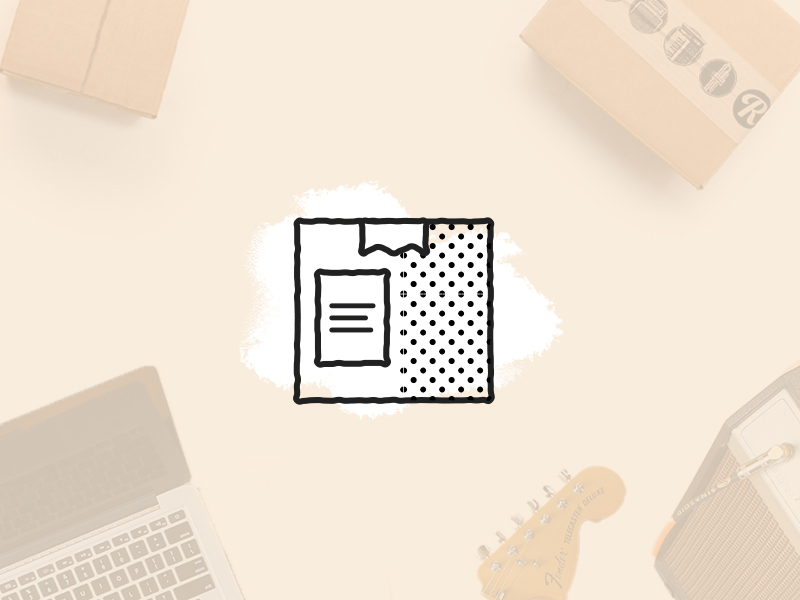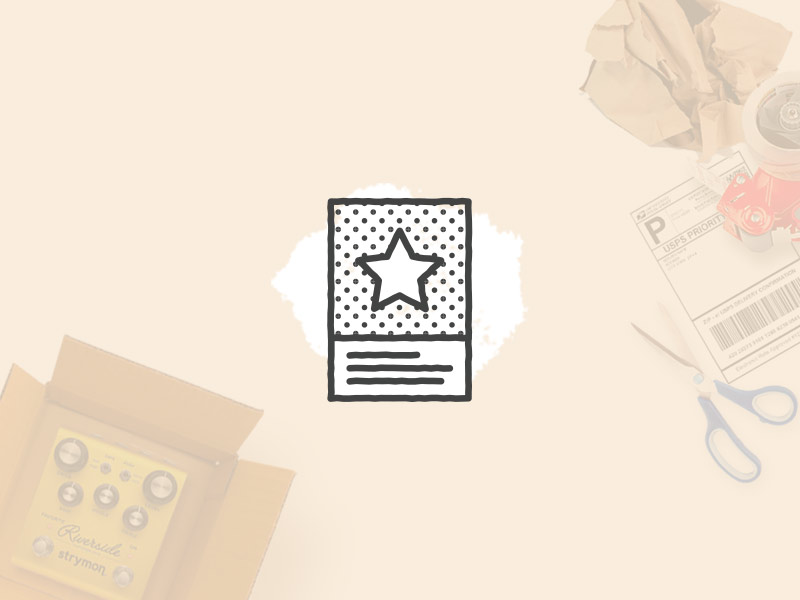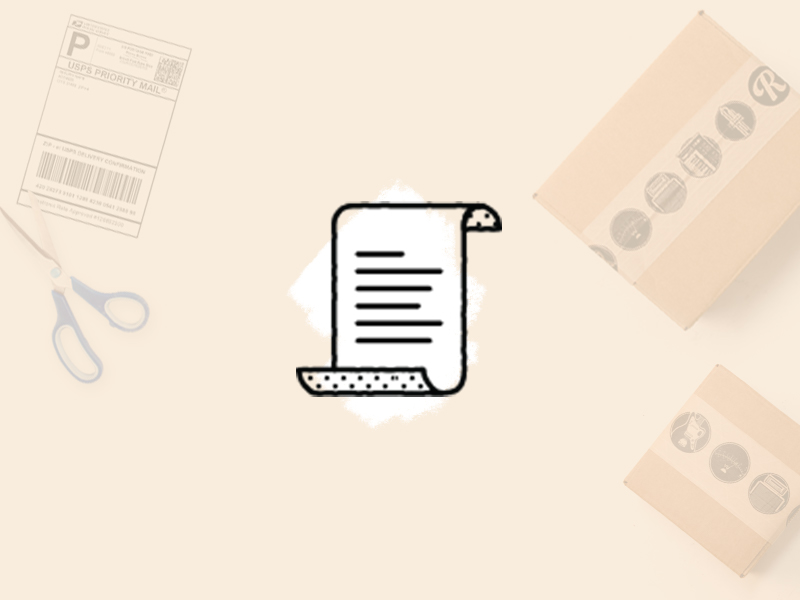Reverb How To's
How to Ship a Guitar
REVERB HOW TO'S
How to Ship a Guitar
- Packing paper, kraft paper, or other non-abrasive packing material.
- At least one rectangular box in brand-new or like-new condition. We offer a set in the Reverb Merch shop.
- Packing tape (sometimes called packaging tape).
- Do not use newspaper or any other paper with ink, which can stain finishes.
- Do not use an old box that has lost its structural integrity.
- Do not use movers tape, masking tape, or other weaker tapes. Only packing tape is strong enough to reliably seal guitar boxes.

- Packing paper, kraft paper, or other non-abrasive packing material.
- At least one rectangular box in brand-new or like-new condition. We offer a set in the Reverb Merch shop.
- Packing tape (sometimes called packaging tape).
- Do not use newspaper or any other paper with ink, which can stain finishes.
- Do not use an old box that has lost its structural integrity.
- Do not use movers tape, masking tape, or other weaker tapes. Only packing tape is strong enough to reliably seal guitar boxes.

Don't detune entirely, but give the strings some slack, which will decrease the amount of tension on the neck.
Nothing should be able to rattle around during transit, so it's important to secure any and all loose components.
- Whammy bars should be detached, wrapped, and stored either in the case pocket or separately within the shipping box.
- Check the bridge and/or tailpiece. If there's any movement or potential for movement, put a piece of packing paper between the moving piece and the guitar's body. Trapeze-style tailpieces in particular should be wrapped with a sheet of packing paper so they do not scratch the body.
- Especially for vintage or extra-valuable guitars: remove the plastic pickup toggle switch and strap pins. Wrap them or place them in a small bag and store them securely in the case pocket. Gibson-style toggle switches are damaged frequently in shipping, and end pins can damage the body if the bottom of the guitar takes a heavy hit.
Create a long strip of packing paper and insert it between the strings and the length of the fretboard. This will prevent the strings from digging into the frets.

Around the body, add packing paper or other safe packing material anywhere there's empty space. (If the case doesn't fit the guitar snugly, add one or a couple layers of packing paper underneath the entire body.) You don't want the body to be able to shift at all during transit.
Secure the neck where it meets the body, but do not add so much material that you cause extra strain on the neck. (Especially for bolt-on necks, you can cause finish cracks during shipping if you overdo it at the neck joint.)
If there are loose areas along the length of the neck, add one or two long sheets of packing paper underneath the length of the neck, or a bit of balled-up packing paper in especially loose areas. Be careful not to put pressure on the neck or anything that obstructs the case when it closes. You just want the case to close snugly around the neck—but the neck should still be free of strain in all directions.
Keep the area around the headstock free of packing materials. For angled headstocks like those found on Gibson guitars, stuffing paper or bubble wrap into the case's headstock cavity can increase the risk of a headstock break. However, if the headstock is resting on the bottom of the case, use a bit of balled up packing paper near the nut to raise the headstock off the bottom. Otherwise, keep this entire area clear of packing paper.

For guitars without a hard case, use a double-walled box or two separate boxes, with one slightly larger than the other. Follow the same principles as above. StewMac also sells an inventive Electric Guitar Shipping System and Acoustic Guitar Shipping System you might want to consider.

Again, the idea is to eliminate the potential for the case to move around within the box—so make sure it's snug.
Seal the box with packing tape and make sure your new shipping label is the one-and-only shipping label visible.
Rest assured that your guitar will get where it's going safe and sound. Now that you know how to ship a guitar the right way, it's time to list some more gear on Reverb!

Shipping Corner
Shipping materials, discounted shipping labels, and safe shipping–plus tips from our team of musicians–all in one place.

How to Sell on Reverb
This step-by-step guide walks you through listing an instrument for sale, pricing it, and photographing it so that you get more money for your gear.

Reverb Shipping Labels
Don’t let trips to the post office eat up your day and your wallet: Become your own shipping center and print shipping labels right at home.
